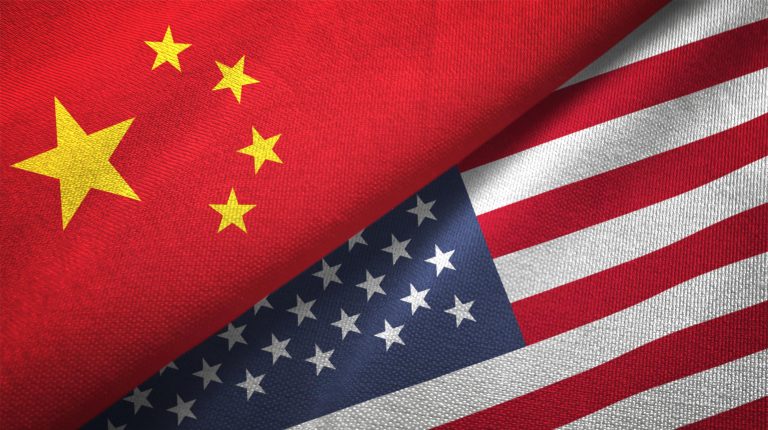As Washington and Beijing recalibrate a relationship defined by rivalry and selective cooperation, the fallout is reshaping global trade flows and the architecture of diplomacy. Tariffs, tech controls and “de-risking” strategies are rewiring supply chains, while governments pivot toward new economic and security alignments. From semiconductors and clean energy to shipping lanes in the Indo-Pacific, the contest now reaches across markets and ministries, leaving allies to balance commitments and emerging economies to court leverage.
This article examines how the shifting U.S.-China dynamic is redrawing commercial corridors, testing legacy institutions and elevating ad hoc coalitions, with consequences that reach far beyond the two powers themselves.
Table of Contents
- US China Rivalry Redraws Trade Flows Alliances and Tech Standards
- De Risking Overtakes Decoupling as Semiconductors Rare Earths and Clean Energy Supply Chains Reconfigure
- What Leaders Should Do Now Calibrate Tariffs Build Crisis Hotlines Align Export Controls Advance WTO and Digital Trade Rules and Coordinate Carbon Border Policies
- In Retrospect
US China Rivalry Redraws Trade Flows Alliances and Tech Standards
Shifts in tariffs, export controls, and industrial policy are rerouting supply chains and investment, with nearshoring to Mexico-now the United States’ top goods trade partner-accelerating alongside “China+1” strategies in Vietnam and India; diplomatic blocs are hardening as the Quad, AUKUS, and IPEF deepen coordination while Beijing consolidates influence through the BRI and BRICS, and technology ecosystems are splintering as Washington tightens chip restrictions and tech-sharing rules and Beijing advances parallel standards across 5G/6G, EV batteries, and payments, leaving corporates to navigate dual compliance regimes, higher costs, and a more fragmented rulebook for trade and data flows.
- Trade flows: Tariff expansions, anti-dumping cases, and outbound investment screening shift sourcing to North America and Southeast Asia.
- Alliances: Security and economic pacts (AUKUS, Quad, IPEF) versus BRI corridors and a wider BRICS signal competing spheres of influence.
- Tech standards: Diverging stacks in chips, telecoms, and AI governance, with curbs on advanced lithography and tighter data-transfer rules.
- Critical minerals: G7-backed supply initiatives challenge China’s processing dominance in lithium, cobalt, and rare earths.
- Corporate strategy: Dual-track compliance, supplier redundancy, and inventory buffers emerge as default risk management.
De Risking Overtakes Decoupling as Semiconductors Rare Earths and Clean Energy Supply Chains Reconfigure
With Washington, Brussels, and Tokyo prioritizing supply security over market purity, global production networks are being rewired rather than severed: advanced chips face tighter export curbs even as back-end assembly, testing, and advanced packaging migrate to ASEAN and India; rare earth mining diversifies to Australia and Africa while separation and magnet plants return to the United States and Europe; and clean energy inputs-from polysilicon and wafers to lithium, nickel, and graphite-shift under new subsidies and sourcing rules. The CHIPS and Science Act and Inflation Reduction Act embed guardrails, the EU’s Critical Raw Materials Act sets quotas and recycling targets, and Beijing’s controls on gallium, germanium, and graphite counter U.S. restrictions on AI chips and lithography. Boards are hard-coding dual sourcing, inventory buffers, and traceability into procurement, accepting higher costs and longer lead times to mitigate shocks and compliance risk as friendshoring redistributes investment and bargaining power across mid-tier economies.
- Winners: Malaysia, Vietnam, India, and Mexico attract chip packaging, EV components, and battery value-added steps.
- Corporate moves: TSMC, Intel, and Samsung scale advanced packaging; automakers lock in upstream offtakes; recyclers expand rare earth and battery recovery.
- Policy levers: Subsidies tied to local content, investment screening, and forced-labor audits reshape supplier rosters.
- Risks: Price volatility, stranded assets, and cross-border licensing frictions as overlapping rulesets proliferate.
What Leaders Should Do Now Calibrate Tariffs Build Crisis Hotlines Align Export Controls Advance WTO and Digital Trade Rules and Coordinate Carbon Border Policies
As Washington and Beijing probe the limits of strategic competition, a compact, actionable agenda can lower risk without surrendering leverage-rebalancing costs on households and manufacturers, installing guardrails against miscalculation, and clarifying acceptable technology and climate measures while preserving room for lawful commerce.
- Calibrate tariffs by replacing blanket duties with targeted, time‑limited measures tied to surge safeguards and supply‑chain vulnerabilities, backed by automatic reviews and consumer‑price impact disclosures.
- Build crisis hotlines across defense, cyber, aviation, and maritime domains, with 24/7 staffed nodes, quarterly exercises, and transparent incident‑notification protocols to blunt escalation.
- Align export controls through a shared “small yard, high fence” list among G7 and key partners, synchronized licensing portals, and enforcement focused on end‑use diversion rather than broad decoupling.
- Advance WTO and digital trade rules by restoring dispute‑settlement timelines, narrowing security exceptions, and setting interoperable standards for cross‑border data flows, source‑code access, and AI safety testing.
- Coordinate carbon border policies via mutual recognition of emissions measurement, a common default for embedded‑carbon pricing, and a transition fund for developing‑country suppliers to prevent green protectionism.
In Retrospect
As Washington and Beijing recalibrate ties, the ripple effects are redrawing trade routes, resetting technology standards, and testing the reach of multilateral institutions. Companies are reworking supply chains, allies are hedging, and emerging economies are seeking leverage rather than choosing sides.
The next phase will turn on whether guardrails hold: export controls and investment screening, dialogue on macro risks and climate, and crisis management in contested regions. Much will also depend on how middle powers marshal collective influence to update rules at forums from the WTO to regional blocs.
What happens next will shape the architecture of global commerce and the parameters of great-power competition for years to come.


